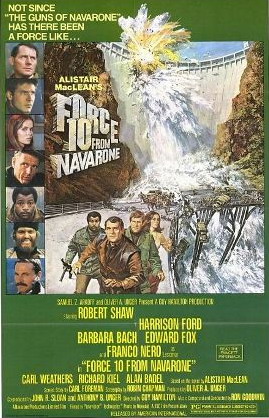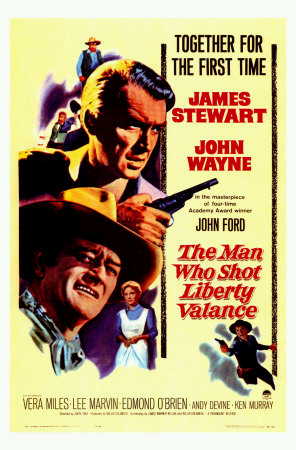 Released in 1962, The Guns of Navarone was a huge hit with audiences, made a ton of money at the box office and impacted countless WWII and espionage movies in the years to come. It was so popular author Alistair MacLean was approached about writing a sequel in novel form that could also be a film sequel. Well, it took some time, and there was plenty of drama, but here’s 1978’s Force 10 from Navarone.
Released in 1962, The Guns of Navarone was a huge hit with audiences, made a ton of money at the box office and impacted countless WWII and espionage movies in the years to come. It was so popular author Alistair MacLean was approached about writing a sequel in novel form that could also be a film sequel. Well, it took some time, and there was plenty of drama, but here’s 1978’s Force 10 from Navarone.
It’s 1943 some months after the successful raid on the island of Navarone, but Major Keith Mallory (Robert Shaw) and explosives expert Corporal Miller (Edward Fox) have been brought together for another impossible mission. They’re being attached to Force 10, a team of agents commanded by Colonel Barnsby (Harrison Ford) being dropped into Yugoslavia to help aid the partisan army battling the Germans. Mallory and Miller have a different mission though. A German agent who blew their cover on Navarone is now believed to be an officer among the partisans. Can they find him and kill him before he does more damage? Will Barnsby and his team pull off their seemingly suicidal job? The odds sure aren’t in their favor.
I re-read both MacLean novels about the Navarone team this May. They were favorites as a young reader. I liked them, the stories are fun and exciting with some great characters, but the twists, turns, coincidences and pure luck get to be a little much at times. Convoluted and confusing come to mind! The movies are the rare efforts better than the source novels. ‘Force 10’ probably would have been better suited as its own stand-alone movie. No cast members return and the connection to the original ‘Guns’ is forced at best. Still, the ingredients are there for a fun espionage story with one of the coolest casts ever.
From director Guy Hamilton, ‘Force 10’ had a smaller budget — which is reflected in some of the special effects and borrowing footage from other movies — and does have a disjointed feel at times. Different versions were released, one 118-minutes and the other 126-minutes, with some scenes transitioning in rough fashion as if there were more cuts with an even longer story. Hamilton’s sequel was filmed on location in Yugoslavia, and it looks great, like we’re really isolated up in the mountains with the partisans battling the Germans. Composer Ron Goodwin (Where Eagles Dare) turns in a whistle-worthy score as well to aid the espionage action.
Replacing Gregory Peck and David Niven is no easy task — I imagine — so Shaw and Fox make an interesting choice. The duo puts a different, lighter spin on Mallory and Miller. There’s a more comedic touch, some more laughs, as the two unassuming agents save the day again and again with their know-how and savvy in the field. A year after the somewhat successful Star Wars, Harrison Ford is solid as Barnsby, an experienced young agent who doesn’t think his two older tag-alongs are worth the risk….until he learns otherwise. The trio has an excellent chemistry among the crazy mission, even more so when an escaped prisoner, Sgt. Weaver (Carl Weathers), a medic, stows away on the mission. An eclectic, oddball mix of agents, but a good one!
Plenty more names worth mentioning though! The always-welcome Franco Nero plays Lescobar, a partisan officer working with Force 10 to accomplish the mission. Barbara Bach plays a double-agent seemingly working for both sides (but she’s got some secrets to reveal along the way, and a nude scene FWIW). James Bond villain Jaws, Richard Kiel, has a fun part as Drazak, a bear of a man and a dangerous, brutal knife fighter. Also look for Alan Badel as a partisan commander, Michael Byrne (Indiana Jones and The Last Crusade) as a sinister German officer, Angus MacInnes as Reynolds, a member of Force 10, and Petar Buntic as Marko, a key resistance fighter.
A bit of a slow start in the 126-minute version, but once things get going, the momentum picks up in a big way. ‘Force 10’ really hits its groove in the last 60-70 minutes as the missions really come to light with some good twists and turns along the way. Fox’s Miller especially has a doozy to reveal in the closing scenes. A lot of fun though with Shaw’s Mallory delivering a great final line before the credits roll.
One more thing. The connection to the original ‘Guns’ is forced at best, making me think ‘Force 10’ may have been better suited to just be its own movie without the connection. It’s too goofy for its own good, but the resolution makes it worthwhile with a good reveal. All complaints aside, I’ve always enjoyed this WWII espionage adventure. It’s a movie with Quint, Han Solo/Indiana Jones, Apollo Creed, the always-welcome Edward Fox, a Bond girl, a Bond villain, and plenty of familiar faces. Not a great flick, but a highly enjoyable one.
Force 10 from Navarone (1978): ***/****

 The 1960’s were the heyday of World War II movies, epic films with all-star casts that became classics of the genre and in some lesser-known cases, immense fan favorites. I love The Great Escape, The Dirty Dozen, The Devil’s Brigade, The Guns of Navarone and many others…but everyone knows those, right? One of my underrated favorites is today’s review, 1965’s
The 1960’s were the heyday of World War II movies, epic films with all-star casts that became classics of the genre and in some lesser-known cases, immense fan favorites. I love The Great Escape, The Dirty Dozen, The Devil’s Brigade, The Guns of Navarone and many others…but everyone knows those, right? One of my underrated favorites is today’s review, 1965’s  Ask a western fan what
Ask a western fan what  If you’re a fan of western movies and American history in the west in general, two firearms come to mind as the most iconic of the era. First? The
If you’re a fan of western movies and American history in the west in general, two firearms come to mind as the most iconic of the era. First? The